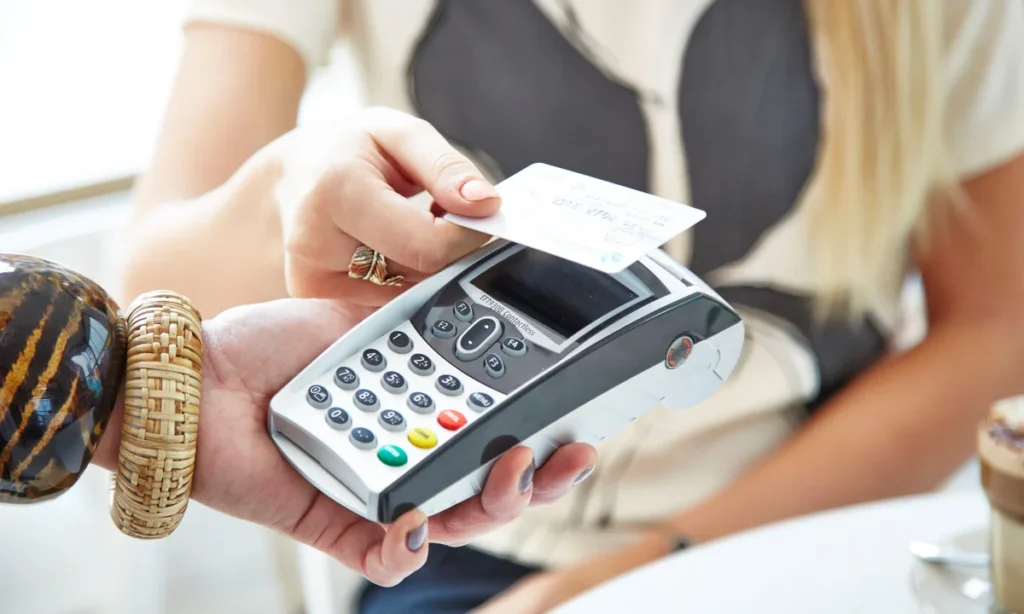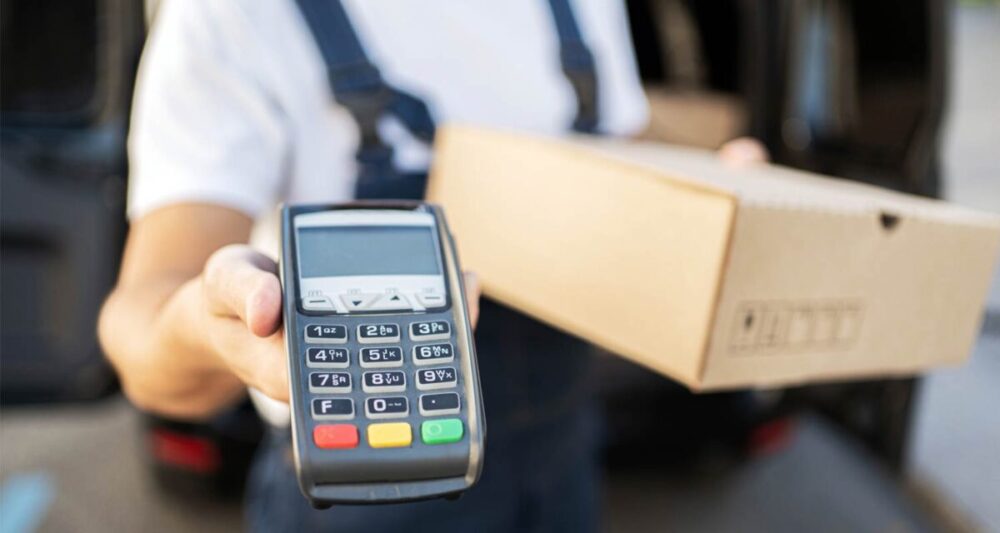The shift from cash to card payments is a growing trend among businesses.
While the popularity of this approach has risen mainly during COVID-19 lockdowns, we must say that this didn’t start at that time.
So, the question arises, why do so many businesses ditch cash and turn solely to card machines?
Let us see why this is the case.
Benefits of Going Cashless
To understand why this is the case, we must understand the benefits of this approach.
Increased Efficiency and Convenience

Source: dojo.tech
Going cashless significantly enhances business efficiency and convenience. Faster transactions at the point of sale reduce wait times for customers, allowing businesses to serve more customers in less time.
This is particularly beneficial in high-traffic environments where speed is crucial. Moreover, the process of end-of-day reconciliations becomes simpler when dealing with digital transactions.
Businesses no longer need to count and recount cash, tally up receipts, or worry about cash register discrepancies. This streamlining of operations allows employees to focus on more critical tasks, thereby increasing overall productivity.
Another convenience is the reduction in the need for bank runs and handling physical cash. Businesses save valuable time and resources that would otherwise be spent transporting money to and from the bank.
This shift also minimizes the risk of errors associated with handling cash, such as incorrect change or miscounted funds. The cumulative effect of these efficiencies is a smoother, more streamlined operation that benefits both employees and customers.
Enhanced Security and Fraud Prevention
Adopting a cashless system enhances security and reduces the risk of fraud. Physical cash is a prime target for theft and burglary, both from external criminals and potentially even employees.
By minimizing or eliminating cash on premises, businesses can significantly reduce these risks. Digital transactions provide a more secure environment, as funds are directly transferred from the customer’s account to the business, reducing the likelihood of theft.
Digital transactions also create a clear audit trail, making it easier to track and verify transactions. This transparency helps in identifying fraudulent activities and minimizing the risk of money laundering.
With every transaction recorded electronically, businesses can maintain accurate financial records, facilitating easier audits and compliance with financial regulations. This increased security extends to customers as well, who can enjoy peace of mind knowing their transactions are protected.
Improved Customer Experience
A cashless system can greatly enhance the customer experience. Faster, more efficient transactions mean shorter wait times and quicker service, which is particularly appreciated in busy settings such as retail stores and restaurants.
Customers no longer have to fumble with cash or worry about carrying enough money. Additionally, the rise of hygienic and mobile contactless payments, like the on you can find at tapeeno. has become increasingly important in a post-pandemic world, providing a safer, more sanitary option for transactions.
Digital payments also tend to encourage increased spending.
Customers using cards or digital wallets often spend more freely than they would with cash, leading to higher average transaction values for businesses. This can result in increased revenue and profitability. Overall, a cashless system can create a smoother, more enjoyable shopping experience that keeps customers coming back.
Cost Savings
Going cashless can lead to significant cost savings for businesses. The costs associated with handling cash—such as security measures, transportation, and time spent on manual counting—are eliminated.
The reduction in overhead costs can be substantial, particularly for businesses that handle large volumes of cash transactions.
Moreover, digital transactions reduce the likelihood of human errors, such as giving incorrect change or miscounting funds. These errors can lead to profit losses over time. By minimizing these mistakes, businesses can protect their bottom line.
There is potential for increased transaction values with digital payments, as customers are more likely to make impulse purchases and spend more when using cards or digital wallets.
Data Insights and Business Intelligence

Source: linkedin.com
One of the significant advantages of digital transactions is the wealth of data they generate. Businesses can track sales trends and customer preferences with precision, allowing for better decision-making and strategic planning.
The data can be used to identify popular products, peak shopping times, and customer buying behaviors, enabling businesses to tailor their offerings and marketing efforts more effectively.
With detailed transaction data, businesses can optimize inventory management, ensuring that popular items are always in stock and reducing the costs associated with overstocking or stockouts.
The data can help in personalizing the customer experience, offering targeted promotions and loyalty rewards that resonate with individual customers.
Environmental Benefits
The shift to cashless transactions also has environmental benefits. Reducing the need for paper and coin production can significantly decrease the environmental footprint of the financial system.
Cash production involves substantial resources, including water, energy, and raw materials, not to mention the pollution generated during the manufacturing process. By going cashless, businesses contribute to a more sustainable and environmentally friendly economy.
Challenges of Going Cashless
But what about the other side of the coin?
Exclusion of Certain Demographics

Source: theguardian.com
While going cashless offers numerous benefits, it can also exclude certain demographics, particularly the unbanked and underbanked populations.
These groups may not have access to banking services or credit facilities, making it difficult for them to participate in a cashless economy. This exclusion can widen the socioeconomic gap and create challenges for businesses that cater to diverse customer bases.
Elderly individuals and those from low-income backgrounds may also face difficulties adapting to digital payments. They may be less familiar with technology or unable to afford the necessary devices and internet access.
Businesses need to consider these factors and ensure they do not alienate valuable segments of their customer base while transitioning to cashless systems.
Cybersecurity Risks
As businesses adopt digital payment systems, they become more vulnerable to cyber-attacks. Cybersecurity threats, including data breaches and hacking, can compromise sensitive customer information and lead to significant financial losses.
The costs associated with recovering from cyber-attacks, including legal fees, fines, and reputational damage, can be substantial.
To mitigate these risks, businesses must invest in robust cybersecurity measures, including encryption, firewalls, and regular security audits.
Employee training on cybersecurity best practices is also essential to ensure that all staff members are aware of potential threats and how to respond to them.
Privacy Concerns
Digital transactions inherently leave a data trail, raising concerns about privacy and increased surveillance. Customers may feel uncomfortable knowing that their spending habits and personal information are being tracked and stored.
It leads to apprehension and reluctance to adopt cashless payment methods.
Businesses need to be transparent about how they collect, store, and use customer data. Implementing stringent data protection policies and providing customers with clear information about their privacy rights can help alleviate these concerns.
Building trust with customers is crucial for the successful adoption of cashless systems.
Economic and Regulatory Barriers

Source: abmagazine.accaglobal.com
Legal restrictions and regulatory challenges can also pose significant barriers to going cashless. In some regions, laws may mandate the acceptance of cash, limiting the ability of businesses to fully transition to digital payments.
Resistance from consumers who prefer cash can slow the adoption of cashless systems.
Businesses must navigate these economic and regulatory landscapes carefully, ensuring compliance with local laws while also advocating for policies that support digital payment adoption.
Engaging with stakeholders, including customers and regulators, can help in addressing these challenges and fostering a smoother transition.
Transition Costs
The initial investment required to implement cashless systems can be a significant barrier for many businesses.
Purchasing and installing point-of-sale (POS) systems, training staff, and integrating digital payment platforms involve upfront costs that may be prohibitive for small businesses.
Moreover, ongoing transaction fees for card payments can add to operational expenses. Businesses must weigh these costs against the benefits of going cashless, considering both short-term and long-term impacts on their profitability.
The Bottom Line
The shift to cashless transactions offers numerous benefits, including increased efficiency, enhanced security, and improved customer experience.
Challenges such as demographic exclusion, cybersecurity risks, and transition costs must be carefully considered.
Businesses should weigh the pros and cons before making the transition to ensure a smooth and successful implementation.


















